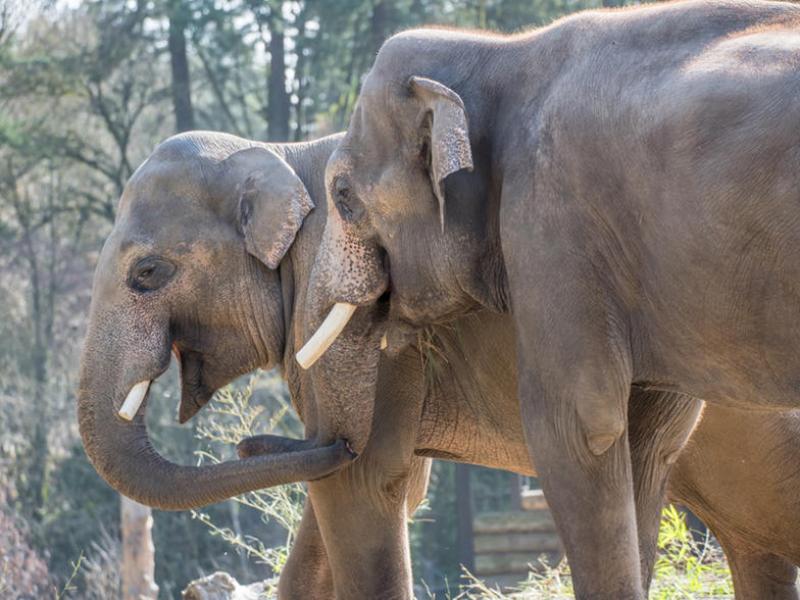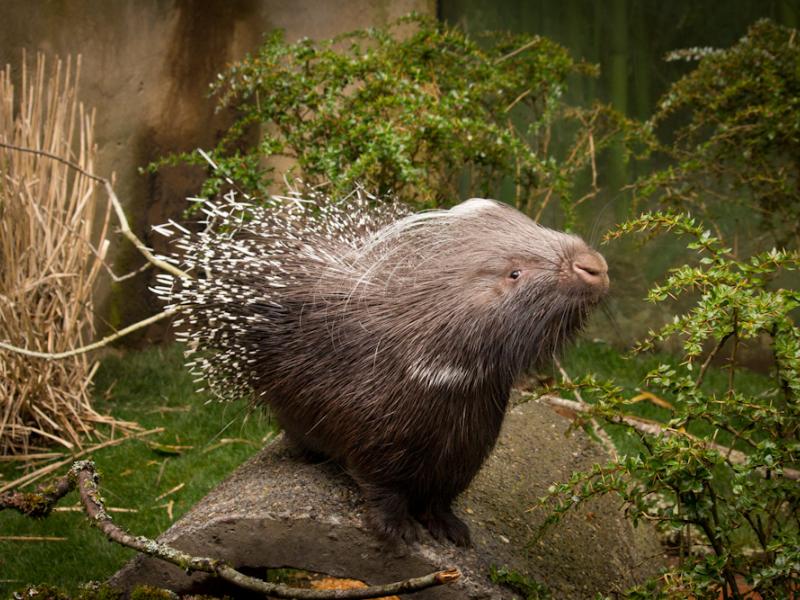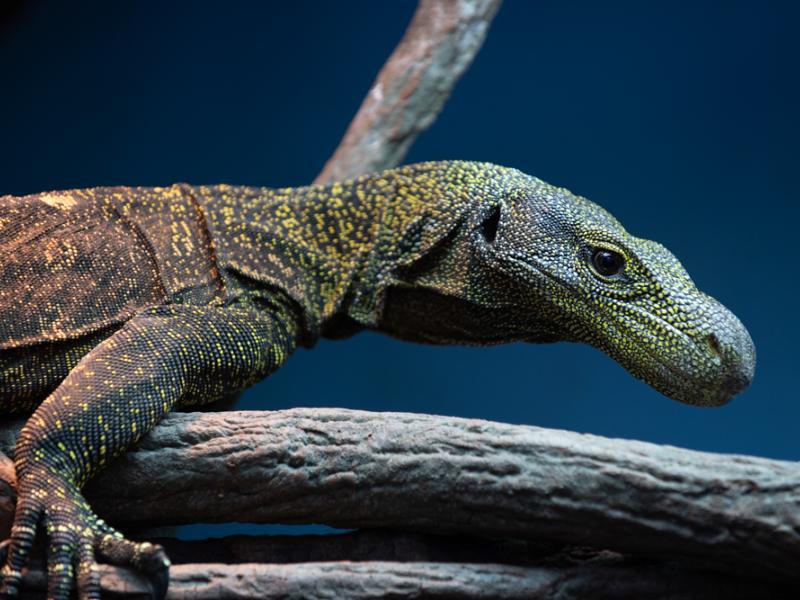
Dwarf mongooses live throughout much of sub-Saharan Africa in a wide variety of woodlands, thickets and savanna habitats. They are the smallest carnivores in Africa and are primarily insectivorous (insect-eaters).
Dwarf mongoose behavior and facts
- This squirrel-sized mongoose is the smallest of the African mongooses. It is short and stocky, with a blunt, pointed muzzle and long tail. It is usually a speckled-brown or reddish color.
- It preys primarily on insects, though it may eat rodents, lizards, snakes and birds.
- Dwarf mongooses live in groups of 12 to 15, covering more than 75 acres of territory. Within that range, 20 or more termite mounds are used as den sites, lookout posts and food sources. Mongooses also find dens in rocky outcrops and hollow logs.
- Den sites are rarely used for more than a few days at a time, since dwarf mongooses are nomadic (moving from place to place in search of food).
- Mongoose groups are matriarchal (led by a dominant female). Along with her mate, she initiates group moves and has first rights to food. She is the only female allowed to breed; subordinate females offspring are usually not allowed to survive. The alpha male is one rank below her. He spends most of his time defending the territory and scanning for danger from atop a termite mound.
- Group hierarchy is reverse age-based; youngest individuals rank higher than older ones. This unusual social arrangement most likely assures that the young will get sufficient food.
- Dwarf mongooses and ground hornbills have a symbiotic relationship (one that benefits both animals). They often feed together; as the mongooses disturb insects with their muzzles, hornbills pounce on the food; hornbills make loud calls to alert mongooses of approaching predators.
From birth to death
- The dominant female in a group produces 2 to 3 litters each year.
- Young are nursed for 45 days; other group members also bring them food.
- At 6 months, young mongooses forage with the group.
- Sexual maturity: females 100 days; but social pressures keep them from mating before age 3.
- Lifespan: 8 years
Vital statistics
- Length: 8 to 12 inches
- Weight: 1 pound
- Tail: 5 to 8 inches
Status
They are not endangered.
Mongooses, the Oregon Zoo and you
The zoo's mongooses live in the Predators of the Serengeti exhibit. They eat specially formulated wet diet food, vegetables, dry cat food, a variety of insects and larva, and whole mice and chicks.




